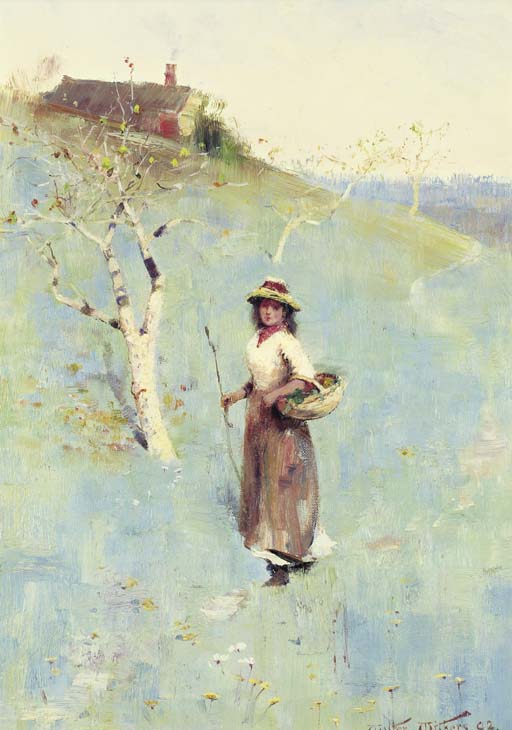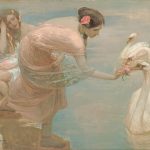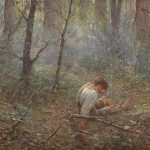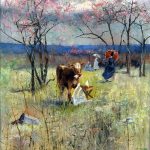FARMER’S GIRL
Walter Withers (22 October 1854 — 13 October 1914)
Australian/English
1892
Oil on canvas
Withers was born at Handsworth, Staffordshire, the son of Edwin Withers. He showed an early desire to paint, but objection was made to this by his father. It is not known what occupation he followed in England, his father objected to his becoming a professional painter.
In 1882 he arrived in Australia with the intention of working on a farm. After working for about 18 months on a farm, Withers removed to Melbourne and obtained a position as draughtsman in a firm of printers.
During the period of his black and white work, Withers executed, in chalk, portraits for reproduction, that of the Count von Bismark being an especially fine example of his work in this direction. In his spare time Withers sought to cultivate his art, and eventually had work accepted for exhibition in the Old Academy, Melbourne.
In 1887 Withers went to Europe, and there he married Fanny Flinn in October of that year. He and his wife settled in a small flat in Paris and he studied for some months at the Académie Julian.
Back to Australia
He returned to Australia with his wife in June 1888 having been commissioned to do black and white work for Messrs Fergusson and Mitchell of Melbourne. His most important work in this way will be found in the illustrations to Edmund Finn‘s, The Chronicles of Early Melbourne.
Withers settled down at first at Kew, a suburb of Melbourne, and then in Eaglemont on the other side of the river Yarra. He became friendly with Arthur Streeton, Charles Conder, Tom Roberts, Frederick McCubbin and other leading artists of the period.
He began to sell a few pictures, but the collapse of the land boom put an end to his illustrative work. In 1890 Withers and his family moved into Charterisville Estate in East Ivanhoe. In 1903 they moved for the last time to Eltham, to a timber house on the corner of Bolton and Brougham Streets. Here, Withers added a studio, where he painted many works featuring the local landscape. Source: Wikipedia.






